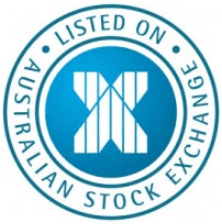
By Evan Lucas for Chris Weston, Chief Market Strategist at IG Markets
China double-speak and RBA in focus
The official China manufacturing data remains in expansionary territory for the 17th consecutive month.
The 0.1 of a point increase is the smallest month-to-month gain on record but still shows that China is doing better than most fear.
However the March read was the first read free of the Chinese Luna New Year and despite the constant expansion there are weaknesses across the domestic sector, seeing price and output contracting. However what is offsetting the domestic weakness is foreign demand, with new export orders jumping from contractionary territory of 48.2 in February to 50.1 in March.
This slight beat on the official figure was then countered when the HSBC final manufacturing PMI was downgraded from the initial flash read last Monday, from 48.1 to 48.0. This is why it is hard to see any major improvements in the manufacturing sector in the immediate future.
With the PBoC draining liquidity over the past three weeks it looks like the bank is unwilling to shift its current program of reigning in credit growth. Interestingly though, the USDCNY fixing rate moved to 6.1503, with the spot rate still above 6.20 – reigning-in on one side, loosening on the other.
China double-speak is making trading very interesting and considering the moves in the iron ore futures (Dalian) which have now recouped all losses from the March rout, it looks to be the central government which will look to increase domestic demand, and the market still believing infrastructure stimulus is the likely outcome.
ECB pained by inflation
Deflation is becoming a real threat to the eurozone and Thursday’s meeting will be more to do with the press conference rather than the rates decision. The ECB is fighting a battle no other G10 currency has to contend with, and that is differing speed economies.
Periphery competitiveness, or lack thereof, remains one of the biggest single issues facing the region. With the official CPI data coming in at 0.5% below expectations and the previous read, the ECB is going to have to really work to move the EUR. Does this mean moving the deposit and refinancing rates some 15 basis points? That would take the ECB into negative real rates on the deposit side and Jen Weidmann did back a possible move to some form of QE.
Tonight sees almost all EU members releasing PMI data, however it will be Germany and France that will be closely watched. France broke out of a 13-month contraction on the flash read and Germany remains in a nine-month expansion. Here lays the dilemma; Rates this low could cause overheating issue in Germany.
The EUR/USD looks to be at a crossroads. The Fed and ECB are almost pseudo-fighting each other; having seen Janet Yellen clarify her language around the Fed funds rate; mopping up her clarification of a ‘considerable amount of time’ to resort to the language of her predecessor with ‘some time’ – removing the prospect that rates will rise in Q1 of 2015. She went on to state that the Fed policy will remain as record low levels to sustain the current trajectory and are unlikely to change even if data-dependant mantras are impacted to the upside (unemployment and inflation).
If the ECB is unable to convince the market it has the tools to act, a figure above $1.37 is going to be tough to bat down.
RBA with low rates
The RBA maintained its record low interest rate position of 2.5%, which was expected, however the preceding statement was a bit of a non-event. There is no doubt the Board is watching the housing market, and having seen record house price growth over the past quarter will be sure to monitor east coast prices even closer. However they did elude to the fact that commodities have pulled back from their peaks, and China’s growth plans, whilst still in the range of official estimates, are weaker.
This is as neutral a statement as the February and March releases, however it is certainly based on the moves in housing and that language is likely to keep getting louder, the faster the market builds up.
AUD/USD jumped through 93 cents on the rate data drop before coming off to pre-announcement levels almost straight after, having moved some 4.6% since the easing bias was removed no new news has let a few take some coin of the table.